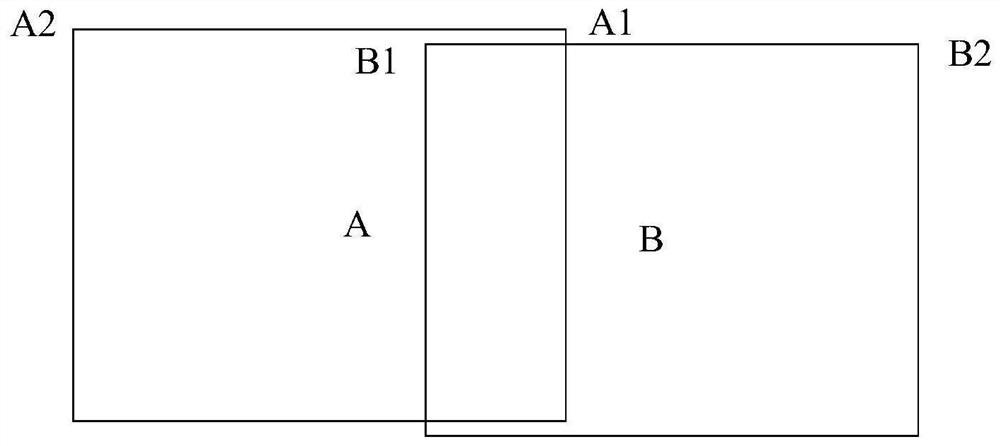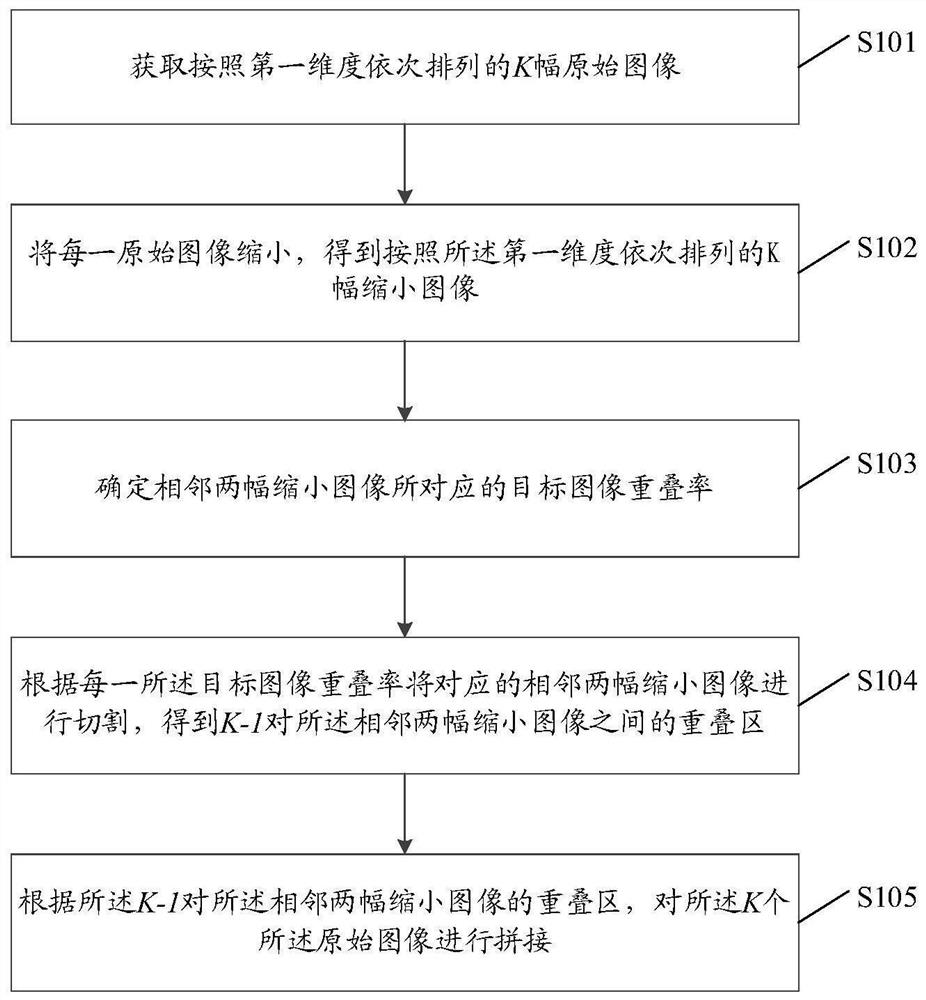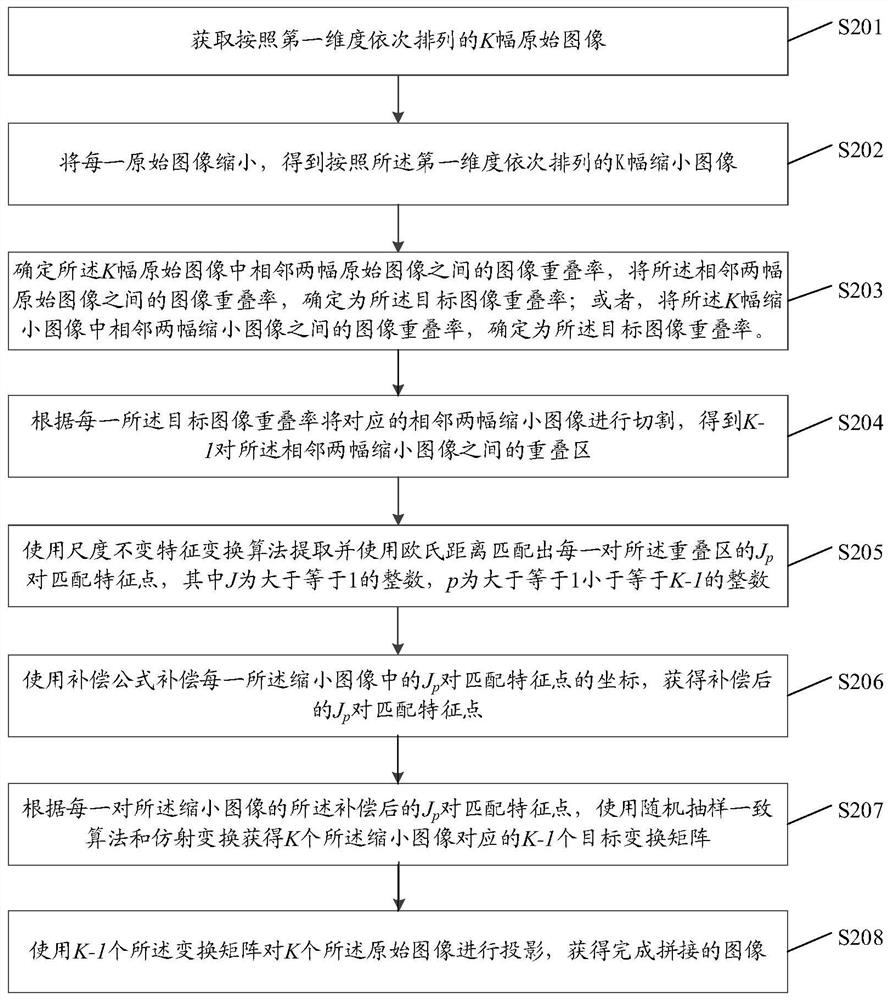Image splicing method and device, equipment and storage medium
An image stitching and image technology, which is applied in the field of image processing, can solve the problems of slow matching speed, image angle of view that cannot meet actual needs, and excessive image size.
- Summary
- Abstract
- Description
- Claims
- Application Information
AI Technical Summary
Problems solved by technology
Method used
Image
Examples
Embodiment Construction
[0018] Image stitching technology is a hot research topic in ScanSAR field. The problems in the stitching process of spaceborne ScanSAR images are manifested in two aspects:
[0019] The first aspect is that the original image resolution of the spaceborne ScanSAR is relatively high and the pixels are too many, which leads to the excessive amount of data processed during the stitching and the slow stitching speed. The size of an original satellite-borne ScanSAR image before stitching is between 1.5GB and 2GB, and each image to be stitched is composed of hundreds of millions of pixels. As a result, when the SIFT algorithm is used to extract feature points of the entire image, there will be too many feature points and the extraction speed is too slow.
[0020] The second aspect is that when extracting full image feature points from the original satellite-borne ScanSAR image, many wrong feature points will be extracted, which affects the accuracy of matching. The basis of image stitc...
PUM
 Login to View More
Login to View More Abstract
Description
Claims
Application Information
 Login to View More
Login to View More - R&D
- Intellectual Property
- Life Sciences
- Materials
- Tech Scout
- Unparalleled Data Quality
- Higher Quality Content
- 60% Fewer Hallucinations
Browse by: Latest US Patents, China's latest patents, Technical Efficacy Thesaurus, Application Domain, Technology Topic, Popular Technical Reports.
© 2025 PatSnap. All rights reserved.Legal|Privacy policy|Modern Slavery Act Transparency Statement|Sitemap|About US| Contact US: help@patsnap.com



